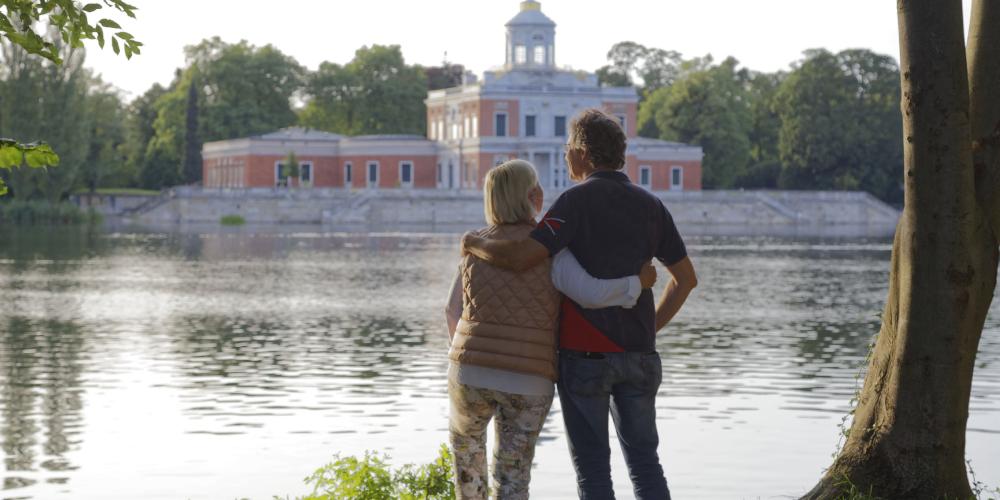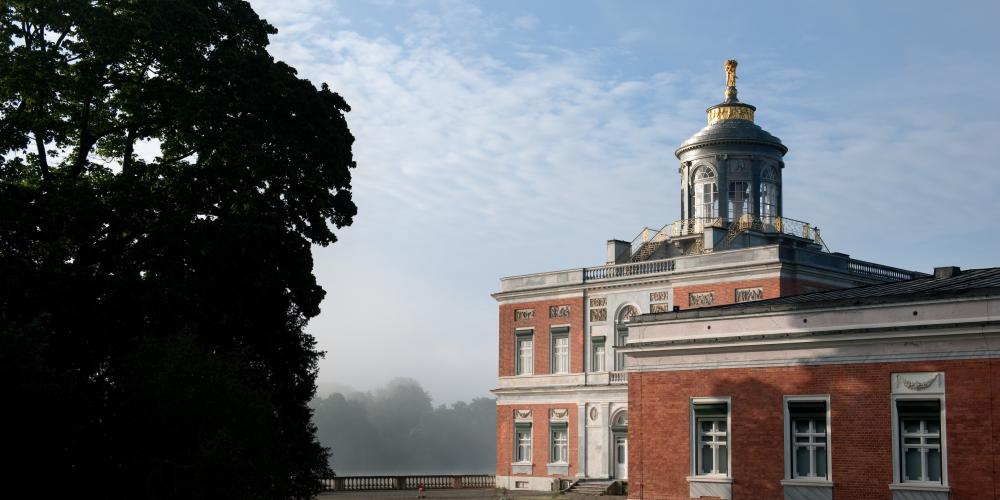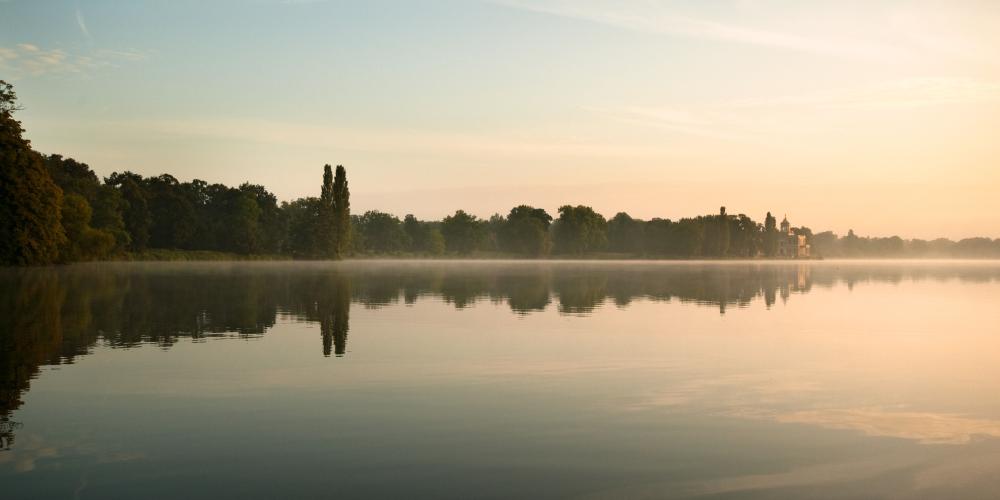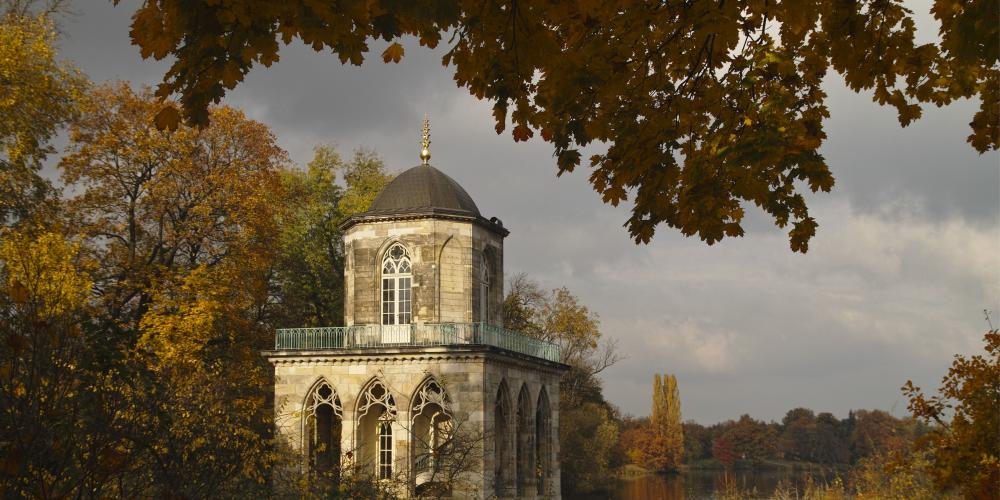A legacy of landscapes

Peter-Joseph Lenné (1789 - 1866) was one of the most important 19th century German garden and landscape architects. When you visit Potsdam, you will see his work in many gardens, parks and squares. The design of the Havel River landscape between Potsdam and Berlin, where Lenné linked utility and beauty under the motto of "landscape embellishment", is a prime example of early German landscape design that has had a far-reaching impact beyond its time.
Lenné moved to Potsdam as a journeyman gardener at the age of 27. One of his first tasks was to deal with the ‘problem child’ New Garden. Fast growing conifers had been planted during the reign of King Frederick William II and were growing out of control – covering the paths and roads.
Lenné’s talent for landscape planning and development was quickly recognised. In 1817, he presented his first plan – a curvy set of baths and lakeshores. His ideas focused on long vistas that were not centred on empty spaces but moved towards outstanding palaces, monuments or landscape elements. The King was so impressed by Lenné that he became Potsdam’s garden director.

Although his plan was never fully realised due to financial constraints, you can get an idea of his concept by taking a look from his former residence, the ‘Grünes Haus’ (Green House), towards the Marble House or the Flatow Tower. To achieve his vision, existing plants had to be extensively cut back – a practice that is still in place so that Lenné’s genius is still enjoyed today.
It was Lenné, too, who in 1823 founded a school for gardeners at Potsdam-Wildpark, later relocated to Berlin-Dahlem. This was the world's first university-level course of study in gardening and landscape architecture.
When visiting Postdam, don’t miss the chance to enjoy Lenné’s legacy by strolling through the gardens. His best-known works are the redesigns of the parks at Sanssouci in Potsdam and the Tiergarten in Berlin. His works were a great inspiration to future generations of gardeners and landscape architects.





